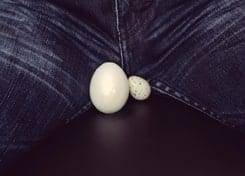Benign Prostatic Enlargement
Benign prostatic hyperplasia (BPH) is the medical term to describe an enlarged prostate. An enlarged prostate is very common in men over the age of 50. Not all men with enlarged prostate experience symptoms. But as the prostate grows, it can press on the urethra, causing problems with the flow of urine as you try to urinate.

Scrotal Hydrocele
A hydrocele is a collection of fluid in the scrotum that causes a swelling, which is soft and often painless. The swelling however may be uncomfortable and unsightly. They are associated with sexual dysfunction in the aging male. A hydrocele is diagnosed by ultrasound, which can be done in the office.
Hydroceles are usually congenital, found in a large percentage (80% or more) of male children and in 1% of adult males over 40. In adults, hydroceles develop slowly, usually as a result of either of a defect that causes overproduction of fluid, or blockage of lymphatic flow. Hydroceles may also develop as a result of inflammation or infection or trauma.

Spermatocele Sclerotherapy
A spermatocele or spermatic cyst is an abnormal sac in the upper part of the epididymis (the epididymis is a coiled tube in the testicle that collects and transports sperm). In most cases, a spermatocele is a smooth, soft mass that contains clear or milky fluid, and sometimes, sperm. The exact reason why spermatoceles develop is unknown but it is believed to be due to a blockage in one or more of the multiple tubes within the epididymis. Spermatoceles are a relatively common problem and are often discovered by chance. Incidental spermatoceles are found in 30% of patients undergoing ultrasound of the scrotum for other complaints.

Scrotal Varicocele / Infertility
A varicocele is an enlargement of veins within the scrotum and is similar to having varicose veins in your legs. Because of malfunctioning valves the blood can therefore pool increasing the pressure in the veins around the testicle.
A varicocele may present as a swelling (sometimes described as a ‘bag of worms’) or dull aching discomfort that may be worse on standing for long periods or on straining. It is associated with a reduced sperm count and fertility problems (it is thought due to the heating effect of the distended veins on the testicle).

